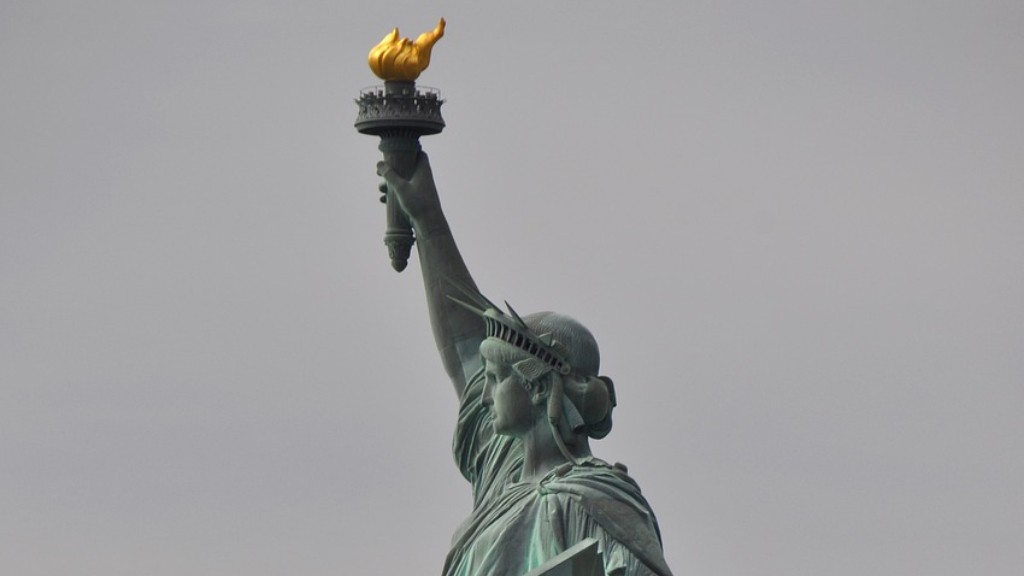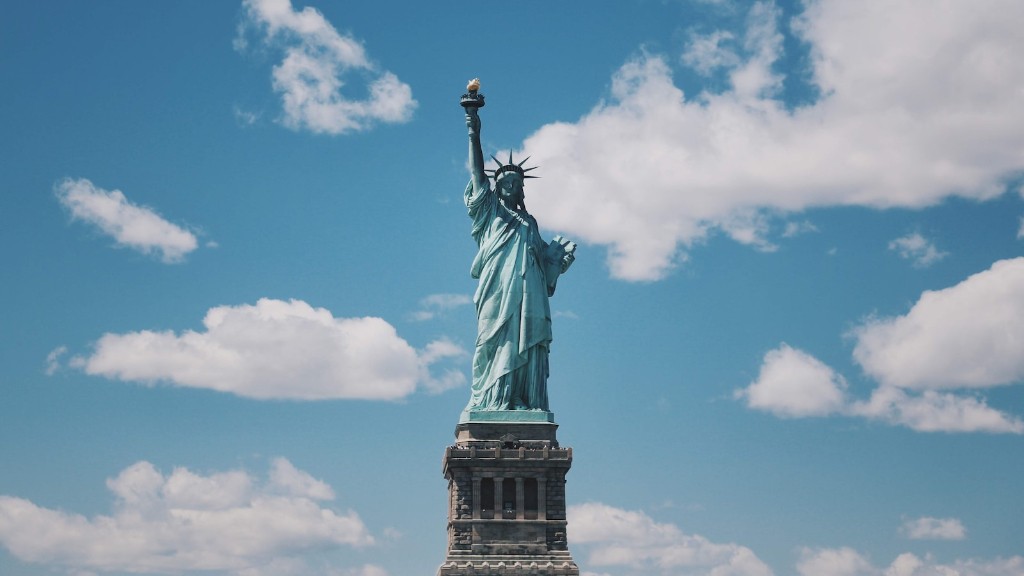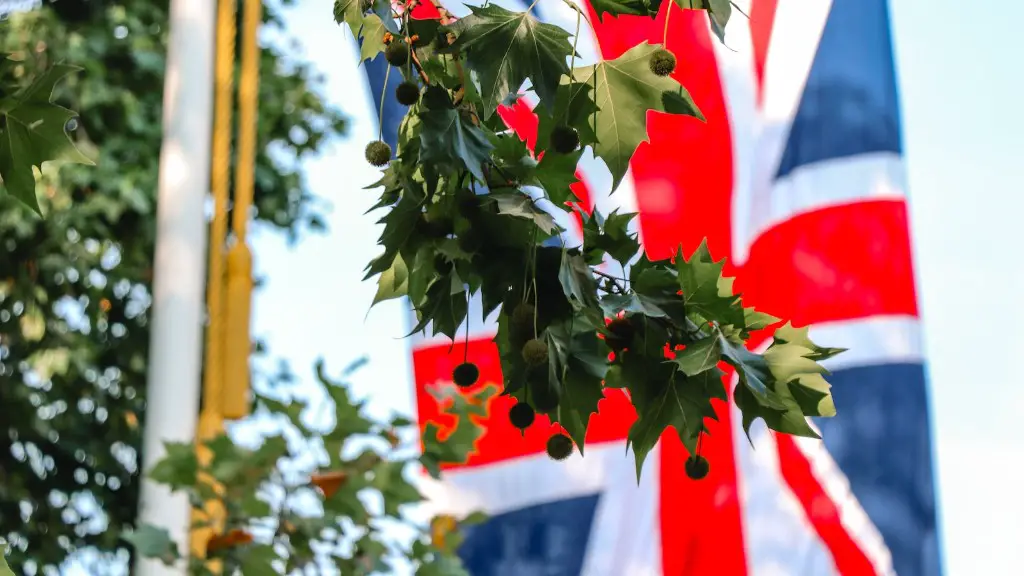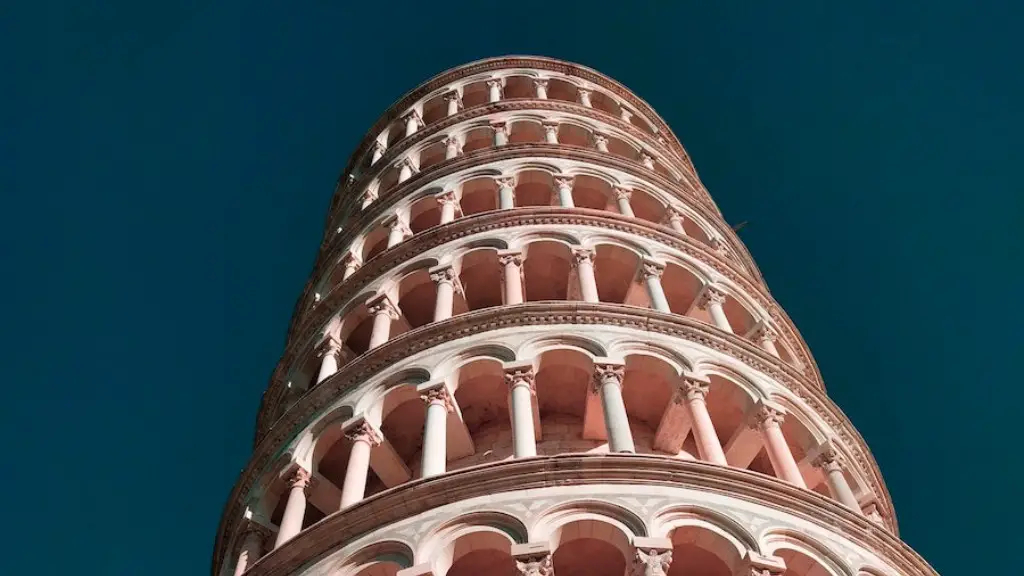The Forbidden City is an iconic complex of palaces and gardens that used to be the Chinese imperial palace for hundreds of years. It is the largest and best-preserved ancient palace complex in the world and was a home and workplace of emperors. It is now a popular tourist destination that attracts thousands of visitors each year. The Forbidden City is located in the center of Beijing, China and is a World Heritage Site.
The Forbidden City is made up of 980 surviving buildings, though originally it was comprised of over 8000 buildings. The most noticeable and important buildings in the Forbidden City include the Outer Court and the Inner Court. The Outer Court encompasses administrative facilities of the imperial family and the Inner Court was the living space of the emperor and his numerous wives and concubines. The Forbidden City is surrounded by a wall that is 10 metres high and a moat that is 6 metres deep.
The Forbidden City is unique not only due to its sheer size and grandeur but also due its intricate design. Every courtyard, pavilion, building and garden has special significance, with each detail carefully crafted to reflect imperial power and authority. The Imperial Palace features an array of intricate and ornate buildings, including gates, bridges, halls, pavilions, gardens, temples, courtyards, and numerous other structures.
The buildings within the Forbidden City can be grouped into three categories: public buildings, private buildings, and residential buildings. Public buildings consist of grand halls, courtyards and other important places of the palace. Private buildings were the emperor’s private quarters and gardens, while residential buildings were the housing of servants, eunuchs, and other courtiers. Many of the buildings were decorated with rich colors, painted murals, sculptures, and glazed tiles, creating an atmosphere of splendor.
All of the buildings in the Forbidden City were constructed using traditional Chinese building techniques and materials, such as timber framing and earth-plastered bricks. This technique resulted in panels, columns and sculptures that give the palace an even greater sense of grandeur.
The Forbidden City provides an insight into the lives of the imperial Chinese families of the past and allows visitors to step into the past. With so many buildings it can be difficult to get a sense of all the buildings, but taking a guided tour is always recommended. With help from a guide, visitors can better appreciate the immense size of the Forbidden City and the unique architecture and design of its countless buildings.
Furnishings of The Forbidden City
The majority of buildings within the Forbidden City contain a wealth of antique furniture and various artefacts. During the Qing Dynasty, due to a period of political stability, there was also a great wealth of art and artefacts, including a number of intricate paintings and sculptures. In addition, several of the public buildings contained a variety of musical instruments that were often played by the Imperial musicians. These instruments are still on display in the Palace today.
Apart from the art, furniture and artefacts that adorn the interior of the various buildings, there are also a plethora of other decorative items, including finely made porcelain vases and immense tapestries. The Palace also features a series of beautiful gardens that are brimming with bright, colorful flowers such as roses, lilies, and tulips.
The Forbidden City isn’t only a tourist destination but is also a museum that is home to China’s imperial history. As a result, a detailed book, titled “Some Information on the Forbidden City”, was written to honor the place and to provide visitors with information and perspective.
Construction of The Forbidden City
The construction of the Forbidden City was carried out from 1406 to 1420, with more than one million workers and a vast number of artisans and craftsmen participating in the project. It is estimated that the cost of constructing this majestic palace complex was equivalent to over twice the annual revenue of the Ming Dynasty.
The architects who constructed the palace complex followed traditional Chinese construction techniques and techniques invented for the construction of palaces. The building materials primarily consisted of rammed earth and timber. The roof tiles of the palace buildings were made from yellow glazed tiles that were made with a special ‘nine-dragon kiln’ technique.
The Forbidden City was constructed according to traditional Feng Shui principles, which aimed to bring peace, harmony, and prosperity to its residents. Feng Shui was considered to be the key to success and a number of buildings were aligned in a particular way in order to produce the desired effect. The two sides of Forbidden City were divided into two sections, known as the “inner city” and the “outer city”, with a central axis connecting them.
The Forbidden City was built according to a vast and complex plan that was put together by the architects and craftsmen of the Ming Dynasty. The construction plan was based on traditional Chinese principles of architecture and engineering and was kept away from the eyes of the people.
Roles and Regulations of the Forbidden City
As the home and workplace of Chinese emperors for centuries, the Forbidden City had a number of strict rules. Within the palace complex, no unauthorized people were allowed to enter, and all communication with the emperor must go through the nine gates of the city. The buildings of the Forbidden City were divided according to rank, and the emperor was never allowed to cross the boundaries between the two sections of the palace. Furthermore, within the Imperial palaces, no loud noises were allowed to be uttered and all the courtiers were to execute their duties in a modest and respectful manner.
Several other rules and regulations have been imposed throughout the history of the palace, such as the prohibition of bringing weapons and any type of animals into the palace. All Chinese emperors had to adhere to the rules of the palace and failure to do so could result in severe punishments. During imperial times, the Forbidden City was a thriving place filled with courtiers, nobles, and other powerful people who all served the hierarchy of their emperor.
The Forbidden City wasn’t just a place of rules and regulations. In addition to managing the affairs of the imperial court, the palace was also used to host lavish festivals, ceremonies and other grand events. Every year during the Lunar New Year, the Forbidden City was flooded with thousands of people who’d come to watch the emperor partake in elaborate rituals and festivities to usher in the New Year.
History of the Forbidden City
The Forbidden City is an iconic symbol of Chinese imperial history and has been the home of Chinese emperors for more than 500 years. The palace complex has gone through many changes and has been continuously expanded and renovated throughout the centuries.
The first emperor of the Ming Dynasty, Zhu Di, decided to construct the Forbidden City after he made Beijing the official capital of the country in 1421. The complex began to be built by thousands of workers and craftsmen from all over China, with construction continuing for several years.
For centuries the Forbidden City served as the political and cultural center of China, and in 1949 the palace complex was declared a national cultural heritage site. It was then opened to the public in the same year, allowing people to come and explore its rich and fascinating history.
The Forbidden City has been a source of inspiration for many artists, writers, and architects, and visitors to the complex can still appreciate the grandeur and beauty of the palace. The Forbidden City is an essential part of Chinese history and culture and is a must-visit destination in Beijing.
Restoration of The Forbidden City
Since the 1950s, many of the buildings and structures in the Forbidden City have been restored and renovated in order to preserve their original design and architecture. Some of the areas that have been restored include the Palace of Heavenly Purity, the Hall of Supreme Harmony, and the East Glazed Hall.
As part of the restoration project, the walls of the Forbidden City have been reinforced and many of the ancestral halls and courtyards have been repaired. In addition, the gardens have been carefully refurbished and various other structures have been preserved in order to maintain the palace’s overall design.
The projects of restoration, repair, and maintenance have been largely carried out in order to preserve the beauty and grandeur of the Forbidden City as well as to protect the palace from the effects of time and weather. This has allowed for the complex to remain open to the public and for people to experience a piece of Chinese imperial history.
Several museums and exhibition rooms have also been established in the Forbidden City in order to give visitors a better understanding of the palace’s history and culture. From the Ming and Qing dynasties to the Republic of China, visitors can appreciate the unique history of the palace and its people.
Significance of The Forbidden City
Since its construction, the Forbidden City has been home to 24 emperors and played an important role in Chinese culture and politics. The palace complex was used to house the political and economic functions of the imperial families and it was home to numerous ceremonies and rituals.
The Forbidden City is also a popular tourist destination and is praised for its elaborate architecture and grandeur. It is the largest ancient palace complex in the world and has been declared a UNESCO World Heritage Site. As a result, the palace complex attracts millions of tourists every year, making it one of the most popular attractions in China.
The Forbidden City is a unique cultural landmark that is rich in history and art. Its grandeur has captivated visitors for centuries, and it is an important part of Chinese history and culture. By visiting the Forbidden City, tourists can experience the breathtaking beauty and grandeur of its countless buildings and gardens.



